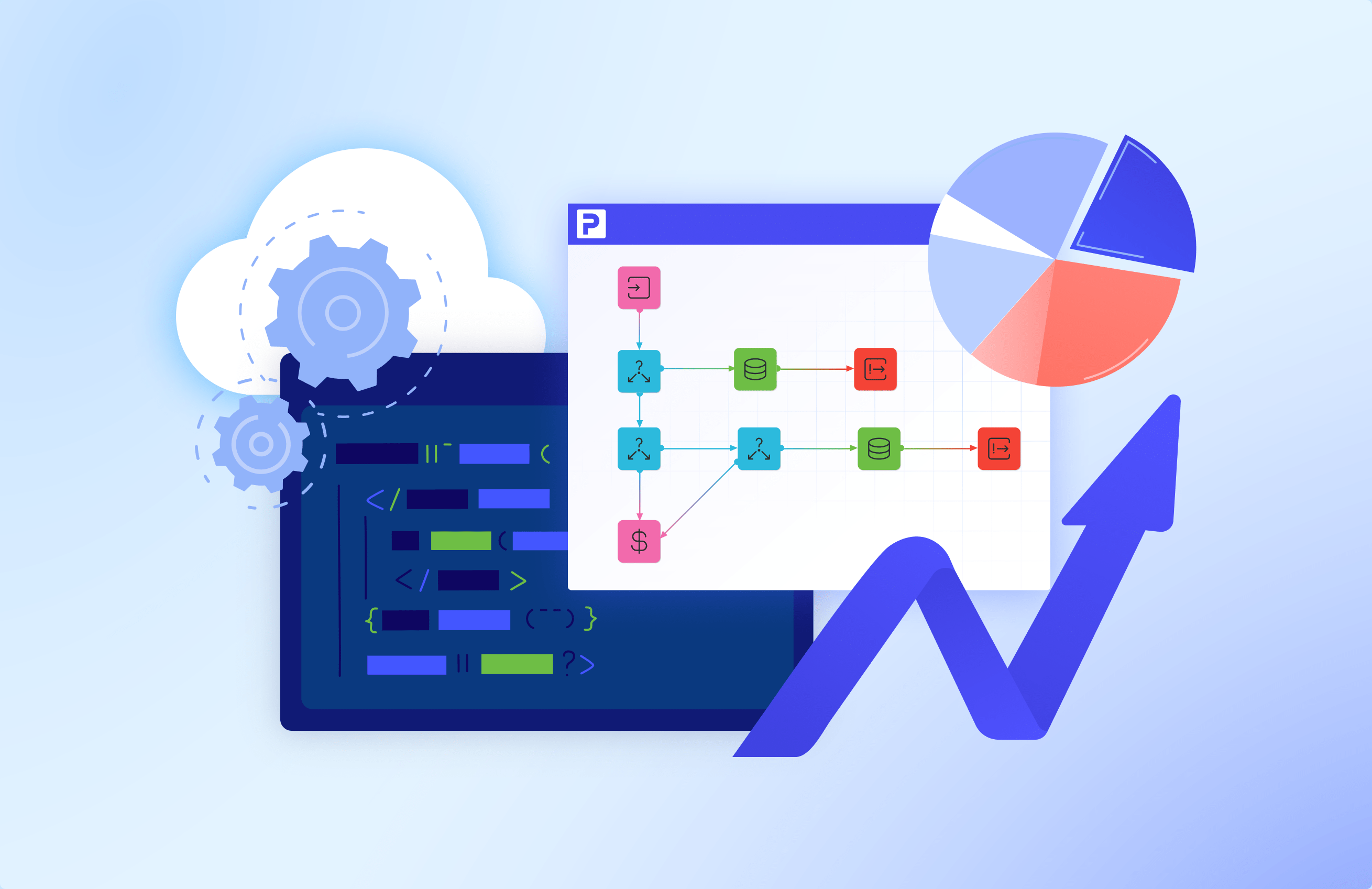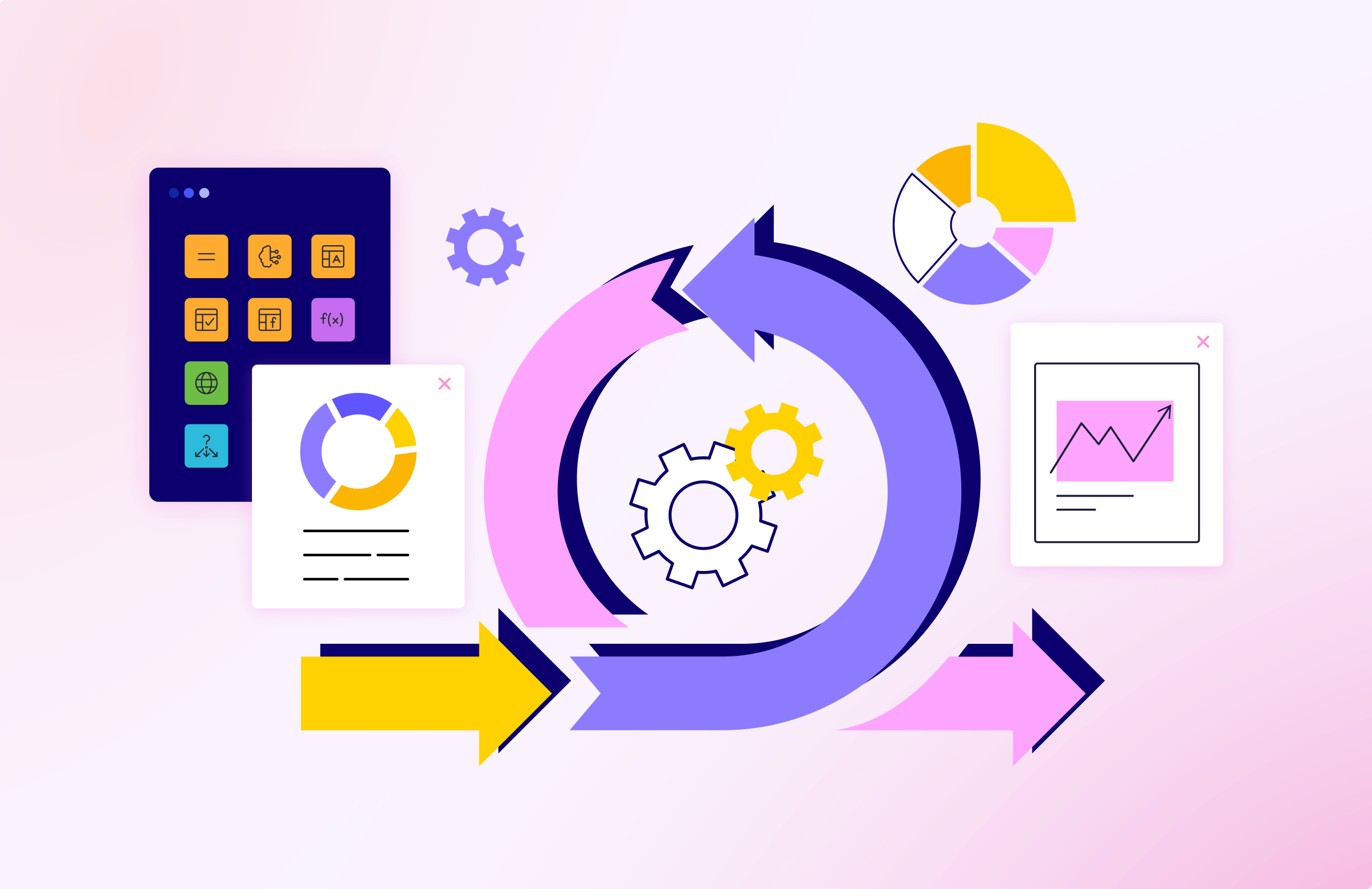FAQ: The Most Important Questions and Answers about Business Rules
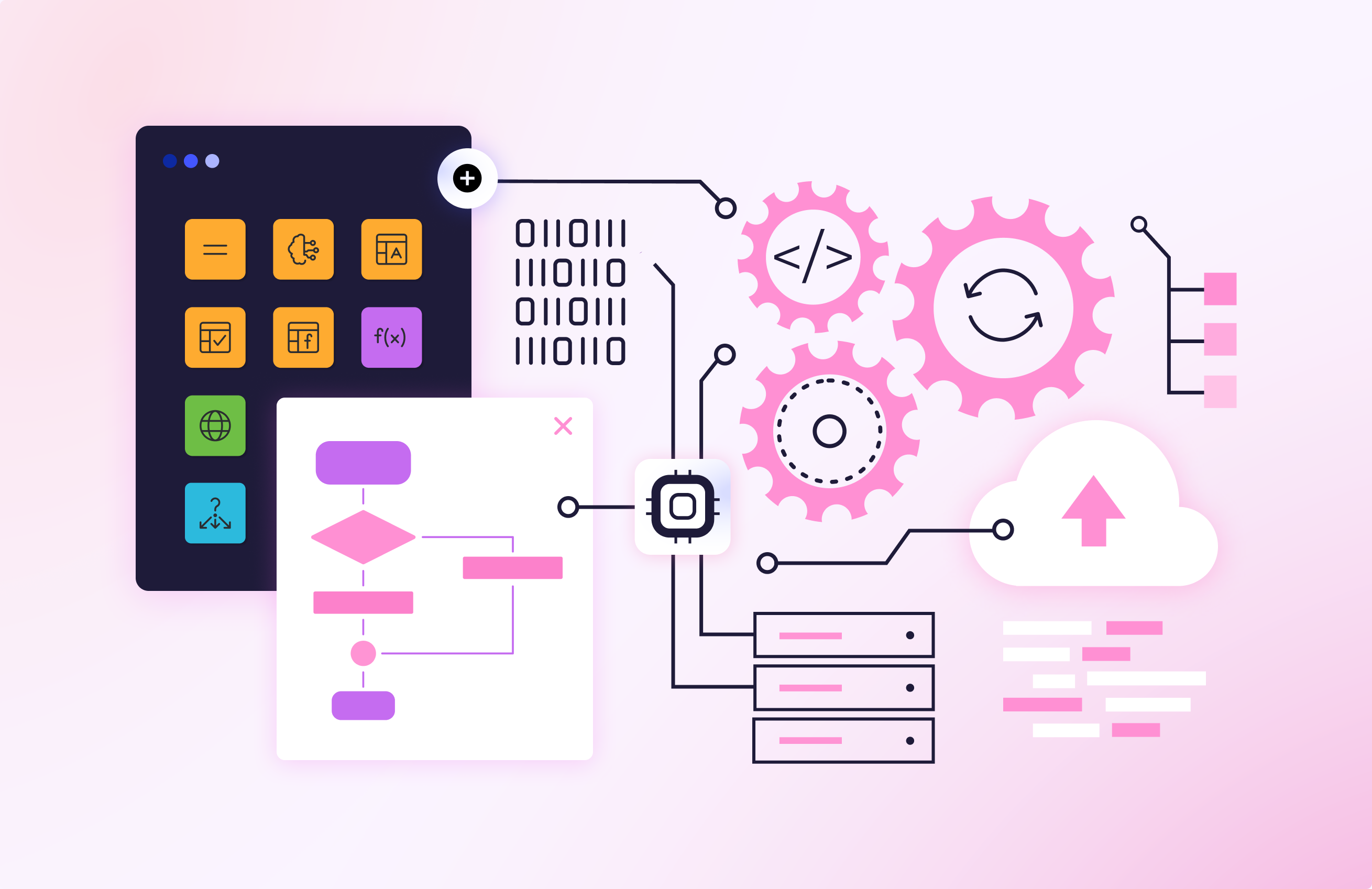

In the digital era, business rules management is an inseparable part of any business process automation. The system drives the sequences of automated digital processes and can work in tandem with other powerful technologies like AI and RPA.
At the same time, many business managers find it difficult to get all the aspects of such systems right. Too many questions may arise when a business adopts the BRMS process automation. In this article, we will answer 20 of the most frequently asked questions on BRMS systems, their application area, and their interactions with other technologies.
What are Business rules?
Business rules represent a set of conditions that define the logic of a digital process. Rules execution is followed by a certain action, depending on the result. In essence, a rule is a condition plus the action that follows it. In the core, the rule is the algorithm that determines the actions that are taken in line with specific data and conditions.
What is the Rule Engine?
Having a business online is inevitably tied to large volume quart processing. Hundreds of data transactions occur at a moment making it hard to process for humans. Businesses use rule-based engines to manage such huge amounts of information.
A rule engine is a program that allows users to create business rules and determine the decision-making process. In other words, the rules engine executes the decision-making logic defined by the rules and leads to a particular outcome that a user expects.
Rule-based engines are visual editors where a user without any deep programming expertise can create a decision-making flow. The engine includes graphic pre-made elements where an IT specialist of a company or trained department worker can insert the necessary variables.
How Do Rule Engines Work?
Rule engines get programmed in Java and work like any other software. At the same time, the rule flows themselves are represented by graphic components that get arranged by the IT specialists of a company.
As soon as the rule flow is ready, users integrate it with a database and the applications that need rule-based decision-making. The rule-based engine gets access to the business rules through the database a company uses. Within the database, the engine can get policies, models, rule sets, and other data necessary for the decision-making process.
The rule engines become a supplementary tool for business ERP systems, banking applications, and insurance software. Whenever the connected applications send a request, the rule engine executes business rules according to the script set by a user.
To support the decision-making process, rule engines can employ AI and ML models. These models can be developed and trained specifically for the needs of an industry or an organization. For instance, if the rule engine works mainly with banking apps, AI/ML models will consider the patterns valuable for effective fraud detection, financial policies, etc. AI and ML technologies make decisions precise and reduce decision-making process risks.
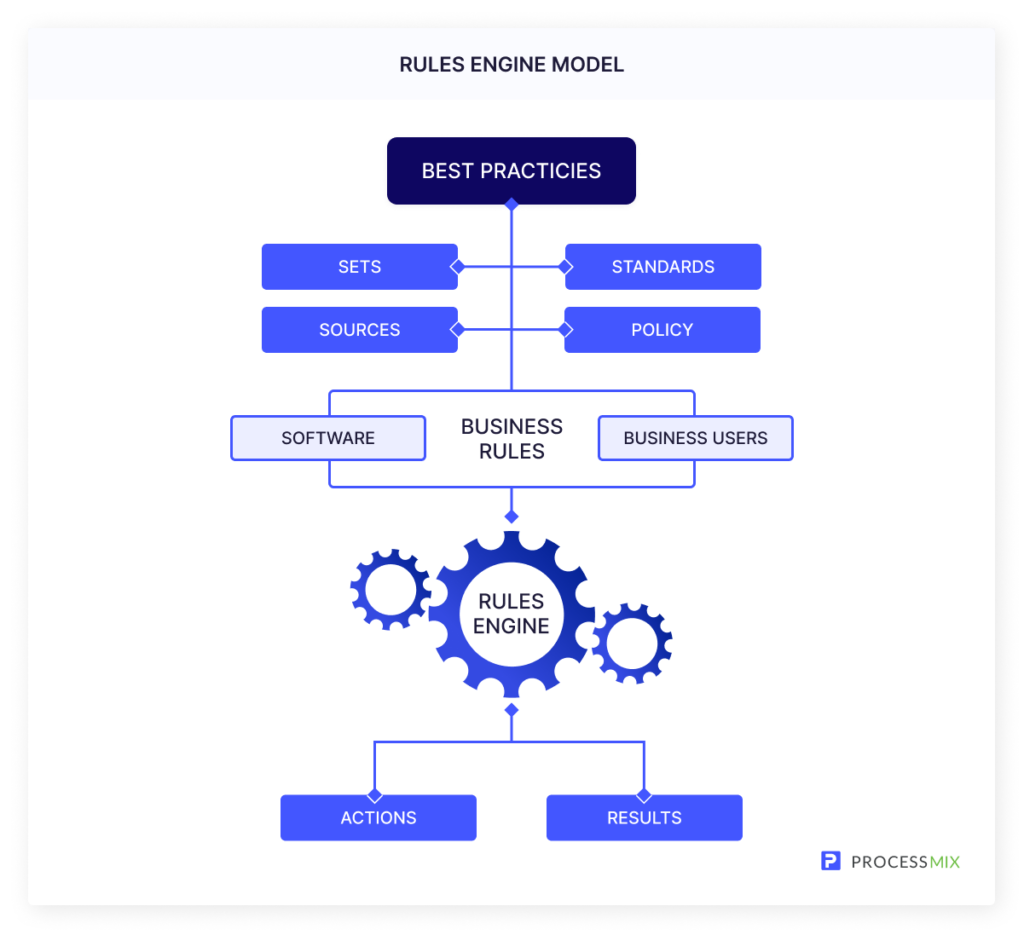
How to Find the Best Rules Engine?
The main characteristic of a performant rules engine is the high speed and accuracy of rules execution. If the engine is able to run your conditions fast and provide precise outcomes, it is worth your attention. These are the characteristics that determine the best-in-class rules decision engines:
- Ensures fast rules execution;
- Includes visual rule modeling and management interface;
- Allows for seamless integration with AL/ML and has trained models for your business industry;
- Has an intuitive UI for department experts (non-IT) to be able to manage the rules;
- Agile and transparent (i.e. allows to change the rules easily and track the rule execution flow visually);
- Has flexible architecture that is easy to scale;
- Provides multiple APIs to interact with different applications your business uses;
- Ensures consistency of business logic and its reusability in other processes.
What Is an Example of a Business Rule?
Business rules follow the same pattern where a condition “if” defines the action the software takes “then”. At the same time, rules differ depending on what industry they are applied to. Below are the business rules examples for three industries: online banking, insurance, and retail.
Online Banking
For example, when an online bank client creates an account, the rules engine collects data from external sources to define the client’s borrowing capacity. The program finds and ingests the client’s demographics, credit history, consumption habits, existing loans, assets, marital status, and other relevant data. The banking app, integrated with BRMS, considers these factors and calculates the potential customer score. Based on the score, the client account creation is either denied or approved.
Also, business rules may be applied for credit decision-making automation. Here, the business rule can look like “If a customer has a high income and has a clear credit history, he or she is eligible for getting a certain amount of money as a loan.” Alternatively, the rule may be: “If a customer failed to pay previous credit in time, he won’t get the loan.”
Insurance
Business rules in insurance serve as a risk management tool that allows insurers to evaluate the insurance claims. `let’s take a situation where a policyholder reports a robbery. In this case, the AI-assisted business rules engine will analyze the policyholder’s letter and other data like police robbery reports to confirm that the claim is genuine. Business rule instance will be “if there are no robbery reports in the area of a policyholder’s residence and the ML shows suspicious patterns in the claim letter, then the systems declines the claim.”
Retail
Online stores can employ BRMS to automate customer engagement and reduce risks. The rule for the customer engagement process automation may be: “If a customer has ordered ten items and left three reviews on them, we give him a $20 discount for the next order”
Business rules for retail risk management allow to set certain limits to avoid payment problems. Let’s suppose a newly registered customer orders an expensive item by invoice. In this situation, he can impose restrictions for invoice orders but allow us to make a purchase via PayPal or a credit card.
When Would You Use a Rule Engine?
You need rule engines when you have a large number of customer transactions to process on short notice. These are some of the most widespread rules engines use cases:
- Automated policy compliance checks that can be used across multiple processes and applications;
- Pricing automatization (risk-based pricing, corporate pricing, etc.);
- Risk management automation (underwriting in insurance, loan applications);
- Scenario-based process automation with flexibility requirements;
- Digital transformation campaigns with multi-channel workflows;
- Centralized calculations and validations (e.g. customer scoring);
- Complex decision-making management.
How Do You Make a Rule Engine?
You can build your own rules engine from scratch or turn to a software company that offers a well-designed rules engine. The first way takes a lot of time and effort to create, set up, and maintain. Eventually, it can become a challenge for your team to adjust the rules engine, distracting the team members from other crucial business tasks.
Alternatively, you can use a platform-as-a-service that includes a rules engine. Such platforms are created by experienced software developers with business requirements in mind. Usually, the platform has additional low-code tools which allow non-IT employees to build rule trees visually with the pre-made components. Additionally, this kind of software can ingest rules in Exel format. Although the development of complex rule flows can require the input of junior-middle developers, the maintenance of the rules still can be performed by domain experts.
How Do You Write a Business Rule?
A business rule is a flowchart with queries, statements, and function calls created using a visual editor as shown in the image below:
To describe the process of rules flow creation we will take ProcessMIX as an example. In the ProcessMIX platform, business users create rules by dragging the elements of a business rule from a list to the visual development environment, linking them to existing features, and customizing the elements via detail settings. To do this, they enter assignments to variables or define threshold values for branching. Then, the rules are saved in the platform’s or user’s database as decision tables. The decision tables facilitate rules management and allow us to work with them comprehensively.
When the rules flow is ready, you can integrate it with your applications and processes. The integration process takes a few minutes. Any rules flow is reusable across all the business applications integrated with it.
Users can then test the rules by creating input values as test cases, specifying the expected results, and executing the rules. If the results do not match the specifications, users can easily trace the execution of the rule and thus find and fix the reason for the deviation.
What Is the BRMS?
BRMS or Business Rules Management System is a software tool for rules definition, deployment, and monitoring. A BRMS allows you to manage business decision logic and automate decision-making. It can work in conjunction with other automation tools to set off the processes in business applications linked to the BRMS.
In opposition to some automation applications, BRMSs can separate the business logic from the app logic. It allows domain experts to create, maintain, and adjust rules without disrupting other business processes.
BRMSs are comprised of the following parts:
- Rules flow development environment enabled with an intuitive visual editor where even non-IT stuff can create rules;
- Rules storage that contains all the created rules and calls the rules when they are requested;
- Interfaces that connect the BRMS with other business applications;
- The business rules engine itself serves as a runtime environment that executes rules.
ProcessMIX for business rules management
Start implementing business rules for your business process automation with a free ProcessMIX demo.
ProcessMIX is a low-code platform for back-end development. The platform has an embedded business rules management system that allows businesses to create rule execution flows on short notice. With ProcessMIX, you build the rule-based decision trees visually from the ready-made graphic code blocks. The code blocks represent the functions so all you need to do is to choose one and set the parameters.
ProcessMIX employs AI and RPA technologies to make the automation process faster and more precise. Using ProcessMIX, even citizen developers can build rule execution automation tools for banking, manufacturing, IT, and other industries.
 Visual Development
Visual Development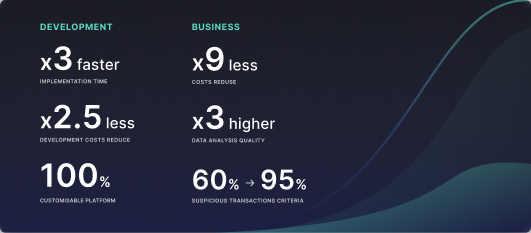 Assignment of risk level and customer category within KYC processes during customer onboarding
Assignment of risk level and customer category within KYC processes during customer onboarding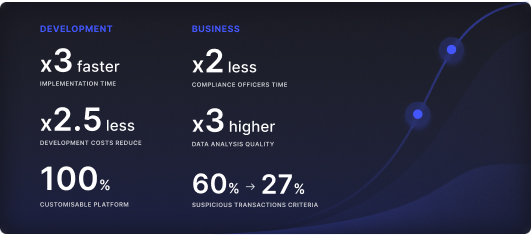 Cross-sell offer calculation for a 12MM strong client portfolio
Cross-sell offer calculation for a 12MM strong client portfolio